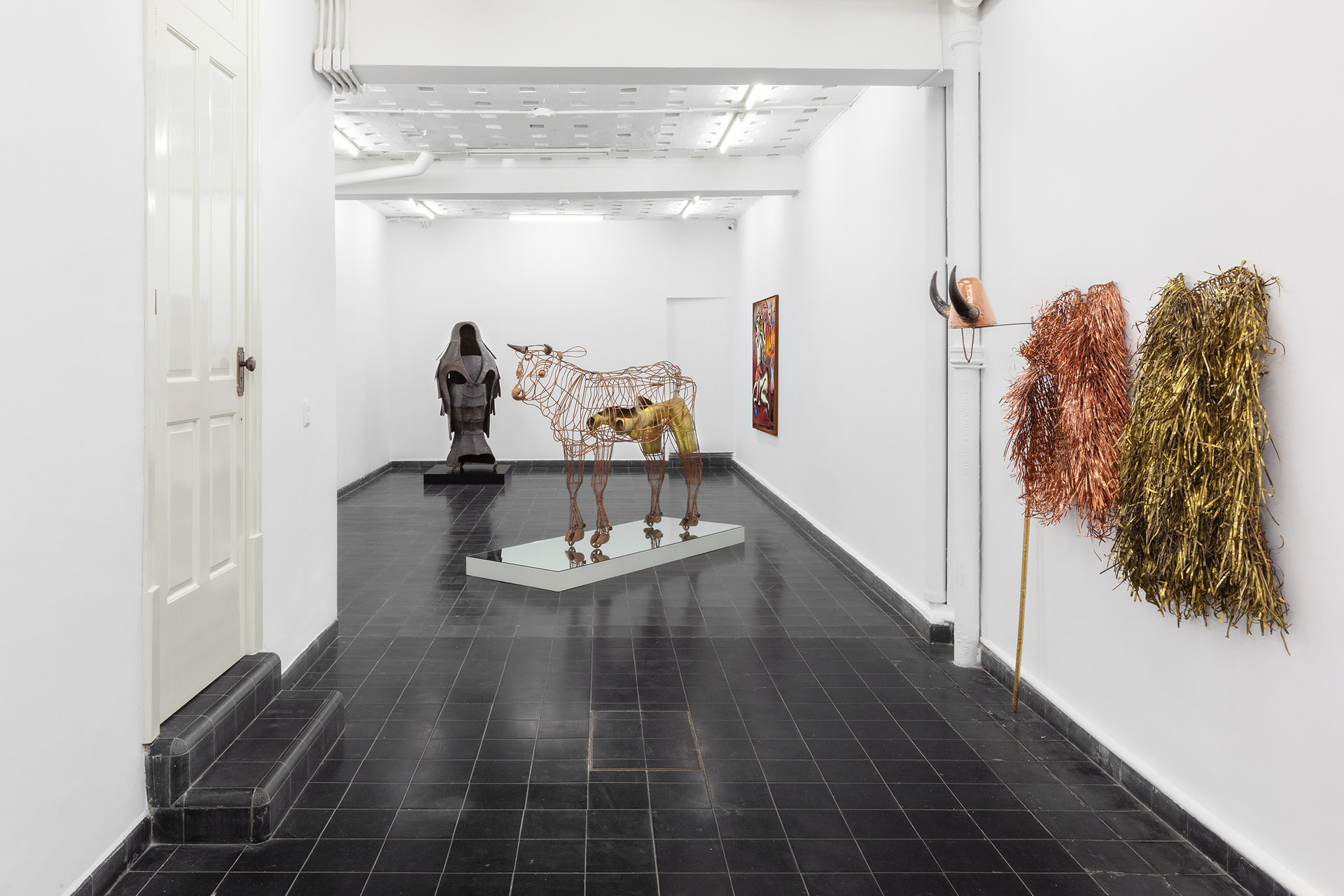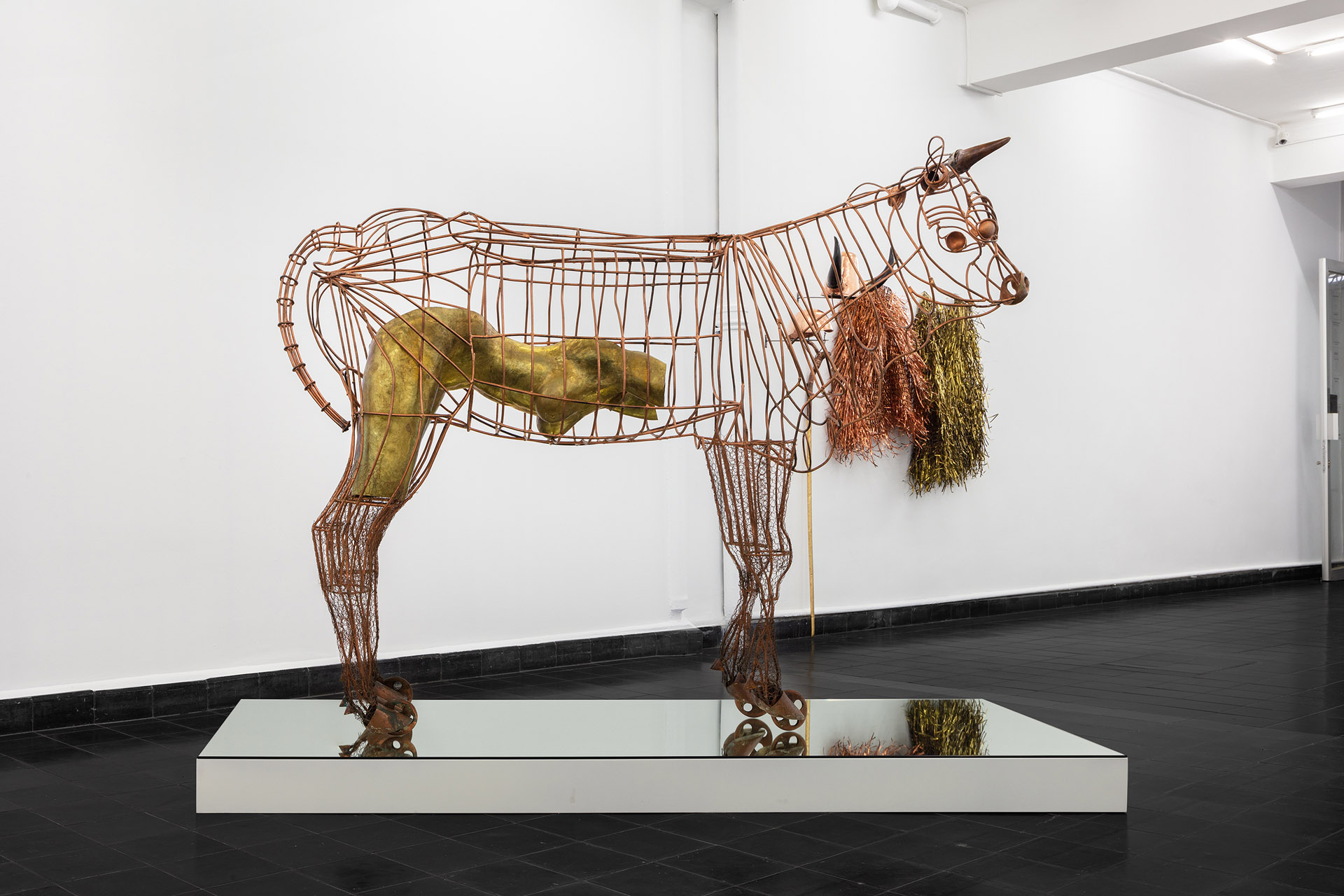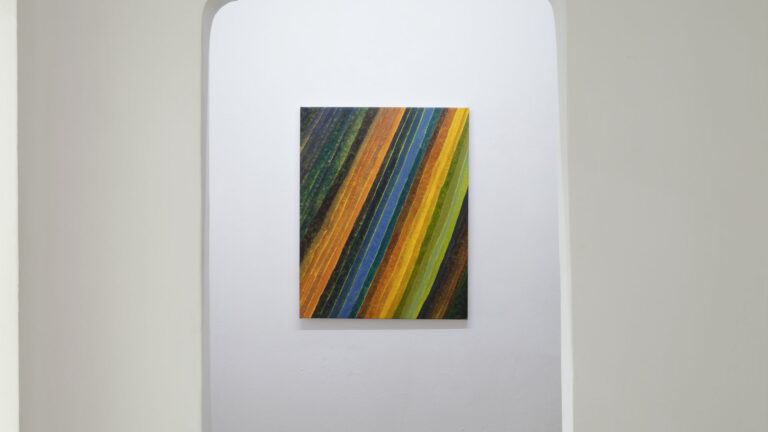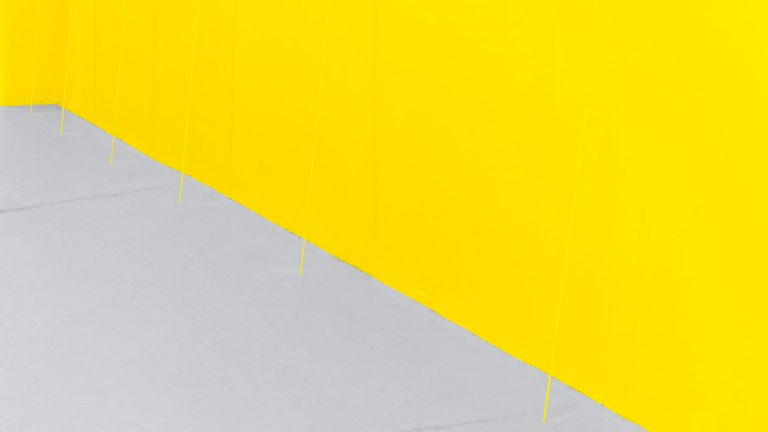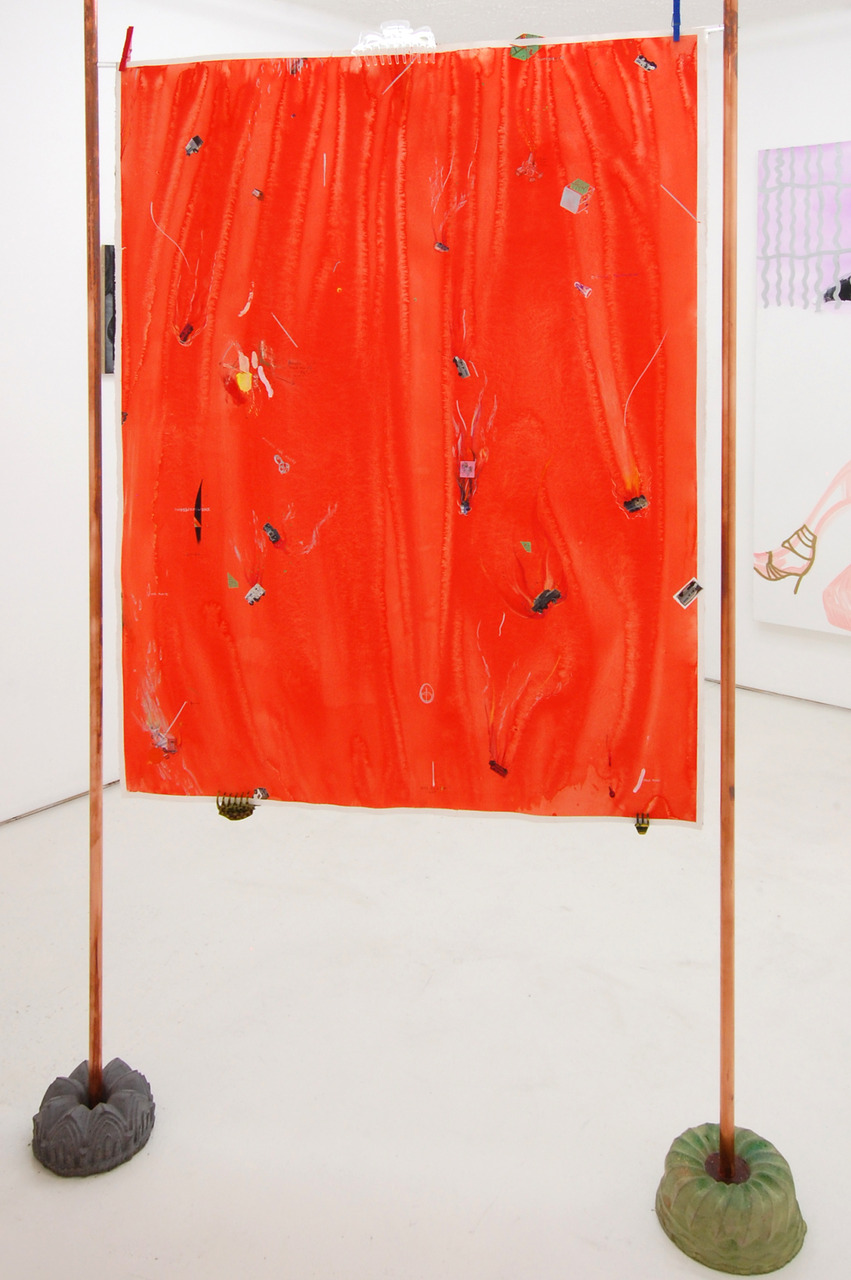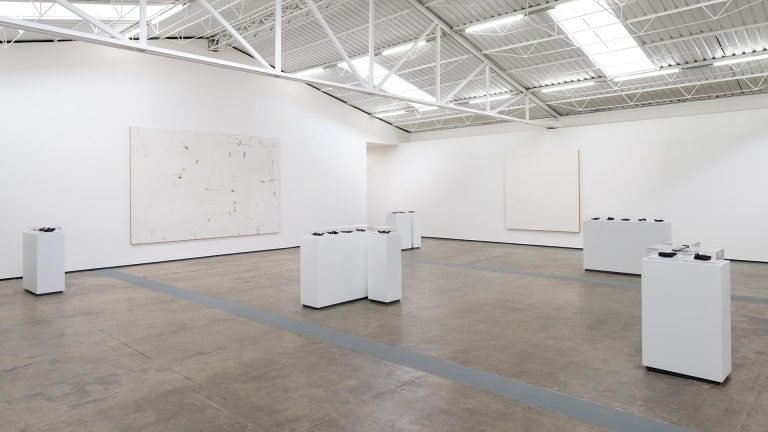Artists: Juan José Gurrola, James Metcalf, Ana Pellicer
Exhibition title: PASIPHAE
Venue: Gaga, Mexico City, Mexico
Date: July 22 – September 11, 2021
Photography: all images copyright and courtesy of the artists and Gaga, Mexico City/Los Angeles
Luis Felipe Fabre
Pasiphae
A dance: this is what I remember. A dance as dream, a hallucination, a trance, this is what I remember from the staging I saw in 2003. But, what did I see? What do I see now? More than the artworks inside the gallery I see the impossible: remnants of a dream, an archeological site uncovering not a fragment in history but a myth, an illusion of a queen’s tomb. Her gleaming burial dowry is proof of it happening, still happens sometimes, that same bloody orgy between gods, mortals, animals and monsters.
It is said the labyrinth was originally a dance. Daedalus’ construction of a dance floor for Ariadne is narrated by Homer. In some versions of the myth Theseus, leaving the labyrinth after killing the Minotaur, dances the intricate crane dance mimicking it’s own secret. That’s what I saw. That’s what I remember: a labyrinthine dance.
Who would’ve thought the ambitious search of Sir Arthur John Evans, the amateur archeologist to whom we owe the discovery and, in great measure, the invention of Minoan culture while excavating Knossos at the beginning of the 20th century, would appear years later in Mexico City. And is only through theatre’s rarest moments, theatre in alliance with poetry, where myth emerges from it’s darkest strata to a place the archeologist did not seem to arrive but where Juan José Gurrola’s mise en scene of Henri de Montherlant’s beautiful dramatic poem did. I saw Pasiphae. I swear I saw queen Pasiphae dancing in a labyrinth of terror and desire.
A labyrinth? Doesn’t it appear, according to the narrative’s structure, after the Minotaur’s birth and built under King Minos instruction in order to confine it? Montherlant’s text chants the prior moment: his poetry is the music leading Pasiphae’s steps into the tragic episode, right before her destiny is fulfilled and has shaped it as her desire from which the Minotaur would be created. But Gurrola knew that in myth there is no before or after, it’s all there happening simultaneously. He knew Pasiphae’s steps are the labyrinth and in its center one finds the desired bull, in other words, her monstrous desire, meaning herself.
Pasiphae: daughter of Helios, sun; sister of Circe, sorcerer; aunt of Medea, sorcerer as well and enamored and tragic; wife of King Minos, daughter-in-law of Europa, the princess abducted by Zeus’ white bull and great granddaughter of Io, the disgraced princess converted into a cow for her love of Zeus; mother of Ariadne, Phaedra and Asterion, the Minotaur; but mostly and to everyone, herself: no one as such as she, Pasiphae, and the attainment of her desire. At least this is how she is described in Montherlant’s text and in Raul Falcó’s translation and in Gurrola’s interpretation, in the gleaming copper and bronce of James Matcalf and Ana Pellicer, in Vera Larrosa’s body on the first staging Gurrola made in 1983 and in Katia Tirado’s body in 2003.
Looking at Gurrola’s, Metcalf’s, Pellicer’s “La Máquina de Dédalo” (Daedalus’ Machine) a gleam of bronce sparkles: doesn’t Pasiphae turn into a bull instead of a cow as she inserts herself into it? Pasiphae is the cow and the bull and her body a labyrinth where in it’s center the Minotaur stands: Ariadne’s string, another entanglement, brings to mind an umbilical cord.
Looking at “La Máquina de Dédalo” a spark of copper shines: Pasiphae’s disguise as cow is the Troyan horse of desire.
Pasiphae, who’s name means wide-shining for all, of all, in other words, the moon. The bull’s and moon’s affairs are a labyrinth as old as night. And sometimes the moon as well has horns: waxing crescent, waning crescent. I’d like to see Metcalf’s and Pellicer’s copper and bronce in the moonlight. I’m sure that still now they could reflect Eros’ primeval beams.
PASIPHAE
Juan José Gurrola, James Metcalf and Ana Pellicer at Gaga from July 22nd through September 4th, 2021. Research by: Angélica García y Mauricio Marcin. Special thanks to Rosa Gurrola, Patricia Sloane and Colección y Archivo de Fundación Televisa.
PASIPHAE, 2021, exhibition view, Gaga, Mexico City
PASIPHAE, 2021, exhibition view, Gaga, Mexico City
PASIPHAE, 2021, exhibition view, Gaga, Mexico City
PASIPHAE, 2021, exhibition view, Gaga, Mexico City
PASIPHAE, 2021, exhibition view, Gaga, Mexico City
PASIPHAE, 2021, exhibition view, Gaga, Mexico City
PASIPHAE, 2021, exhibition view, Gaga, Mexico City
PASIPHAE, 2021, exhibition view, Gaga, Mexico City
Ana Pellicer, Pasiphae, 1983, Brass and coper, Variable Dimensions
Ana Pellicer, Pasiphae, 1983, Brass and coper, Variable Dimensions
Juan José Gurrola, Untitled, 1987, Acrylic on canvas, 25.2 x 21.26 x 1.18 inches, 64 x 54 x 3 cm
Juan José Gurrola, Pasiphae (De la serie Presas de Salón), 1987, Acrylic on canvas, 54.72 x 54.72 x 1.18 inches, 139 x 139 x 3 cm
Juan José Gurrola, Pasiphae (De la serie Presas de Salón), 1987, Acrylic on canvas, 48.03 x 48.03 x 1.57 inches, 122 x 122 x 4 cm
James Metcalf, Máquina de Dédalo, 1983, Hammered brass and forged iron, 76.77 x 55.51 x 24.02 inches, 195 x 141 x 61 cm
James Metcalf, Nodriza, 1983, Brass, 68.9 x 27.56 x 21.65 inches, 175 x 70 x 55 cm




